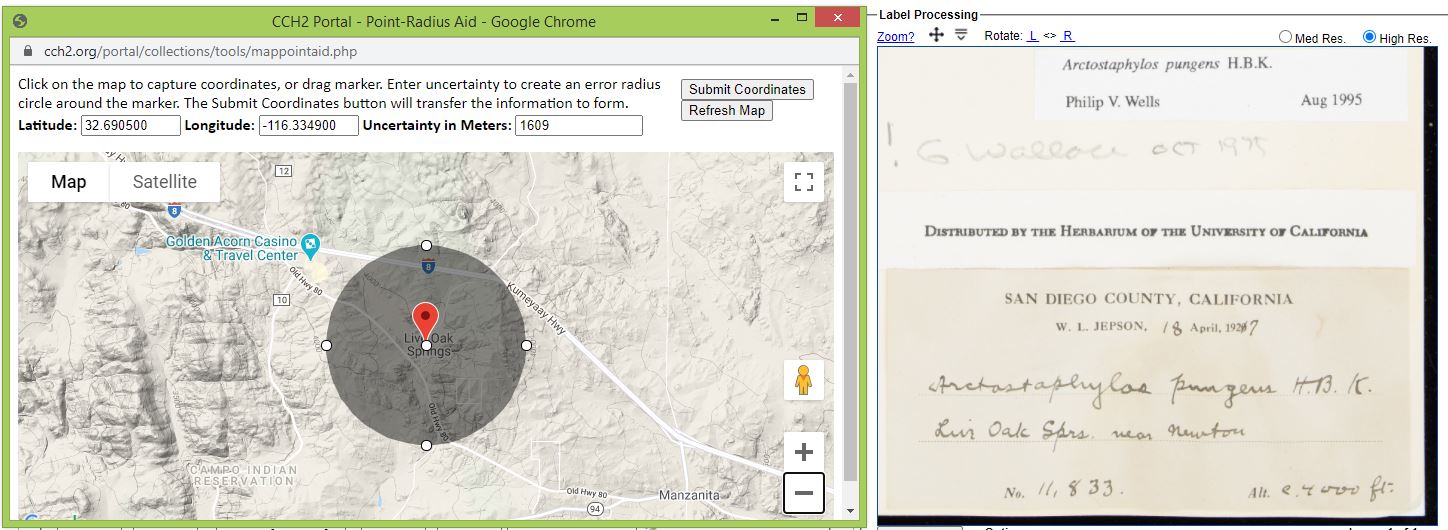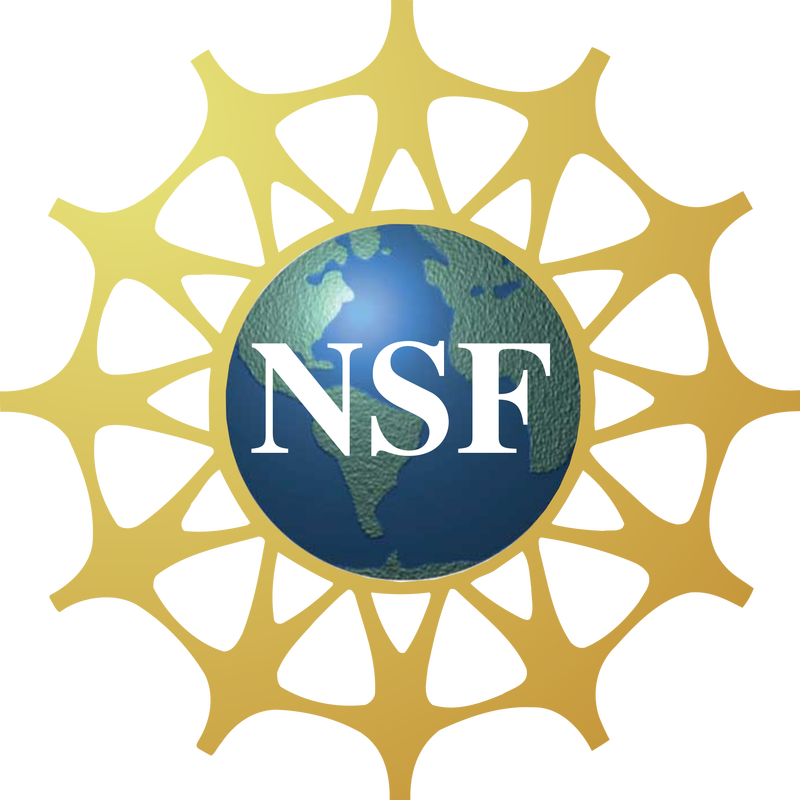Botanists and naturalists across the state are banding together to deepen our knowledge of where California plants have historically occurred. In September 2020, the California Phenology (CAP) Network launched the “100 Club,” a team of experts who are trained to “georeference” herbarium specimen records in CCH2 (cch2.org), a new data portal that serves vascular plant data from California herbaria. Members of the 100 Club have experience with one or more geographical areas, and they use this expertise to translate textual descriptions of specimen locations into latitude and longitude coordinates: dots on a map.
The CAP Network aims to georeference 300,000 herbarium specimens by 2022, and they are well on the way to achieving that goal; however, producing accurate georeferences is often challenging. This is where the expertise of local experts comes into play.
“Anyone can read a label and put a dot on the map, but in order for that dot to be accurate, you need people who know an area well. There is no re- placement for local knowledge about a place,” says Jenn Yost, professor at California Polytechnic State University and lead PI of the CAP Network. “Many of our labels refer to place names not found on any map, but if it’s your backyard, you’ll know right where it is.”
To date, the 100 Club includes 28 active members representing many vocations and locations, from self-taught botanists, to ecological consultants, to professional botanists and taxonomists, each with expertise ranging from Baja California to the Pacific Northwest. Similarly, specimens in CCH2 originate from across the state and even the globe, underscoring the importance of a diversity of experienced georeferencers. Together, the 100 Club has georeferenced over 8,000 specimen records in only a few months, yet the process has been anything but tedious.
“For me, georeferencing is a multidimensional experience,” explains Chris Hauser, manager of the Panoche Valley Preserve and avid 100 Club Member. “When I’m georeferencing an herbarium specimen, it’s as if I’m above tree line at 10,000 feet in the mountains with Dean Taylor or walking through a dark coast redwood forest with Jeff Norman. I can almost hear the wind in the trees, smell the vegetation, and feel the soil under my feet.”
The CAP Network aims to georeference 300,000 herbarium specimens by 2022, and they are well on the way to achieving that goal; however, producing accurate georeferences is often challenging. This is where the expertise of local experts comes into play.
“Anyone can read a label and put a dot on the map, but in order for that dot to be accurate, you need people who know an area well. There is no re- placement for local knowledge about a place,” says Jenn Yost, professor at California Polytechnic State University and lead PI of the CAP Network. “Many of our labels refer to place names not found on any map, but if it’s your backyard, you’ll know right where it is.”
To date, the 100 Club includes 28 active members representing many vocations and locations, from self-taught botanists, to ecological consultants, to professional botanists and taxonomists, each with expertise ranging from Baja California to the Pacific Northwest. Similarly, specimens in CCH2 originate from across the state and even the globe, underscoring the importance of a diversity of experienced georeferencers. Together, the 100 Club has georeferenced over 8,000 specimen records in only a few months, yet the process has been anything but tedious.
“For me, georeferencing is a multidimensional experience,” explains Chris Hauser, manager of the Panoche Valley Preserve and avid 100 Club Member. “When I’m georeferencing an herbarium specimen, it’s as if I’m above tree line at 10,000 feet in the mountains with Dean Taylor or walking through a dark coast redwood forest with Jeff Norman. I can almost hear the wind in the trees, smell the vegetation, and feel the soil under my feet.”
Georeferencing herbarium specimens can be an adventure into the past as members explore historical collecting locations—parks, forests, mountains, valleys, and preserves—some of which no longer exist in their natural state. Georeferencers also become familiar with historical and recent collectors, their collecting patterns, and their label styles. Each specimen is like a time capsule, embodying the tireless efforts of passionate people and their botanical escapades.
The CAP Network invites everyone with some naturalist experience to join the historical exploration by becoming part of the 100 Club. Each member completes the CAP Network’s online georeferencing training course and receives live, virtual training via Zoom. As members begin to work in the CCH2 portal, they are fully supported through additional training and communication. To sign up, fill out the interest form here: tinyurl.com/37c3m5xb.
Thanks to the dedicated efforts of this group of naturalists, more herbarium specimens are georeferenced each day, helping us build a more comprehensive understanding of where and when plants have occurred across California and beyond. These data are critical in the face of a changing climate and potential effects of those changes on California’s precious plant diversity.
The CAP Network invites everyone with some naturalist experience to join the historical exploration by becoming part of the 100 Club. Each member completes the CAP Network’s online georeferencing training course and receives live, virtual training via Zoom. As members begin to work in the CCH2 portal, they are fully supported through additional training and communication. To sign up, fill out the interest form here: tinyurl.com/37c3m5xb.
Thanks to the dedicated efforts of this group of naturalists, more herbarium specimens are georeferenced each day, helping us build a more comprehensive understanding of where and when plants have occurred across California and beyond. These data are critical in the face of a changing climate and potential effects of those changes on California’s precious plant diversity.
This article was originally published in the Jepson Globe: A Newsletter from the Friends of The Jepson Herbarium. Vol. 31. No. 1, Spring 2021. p. 9. To receive the Jepson Globe, become a member of the Friends of The Jepson Herbarium here: https://give.berkeley.edu/fund/FU0840000.
The article was updated to reflect statistics as of the date of this blog's posting.
The article was updated to reflect statistics as of the date of this blog's posting.

